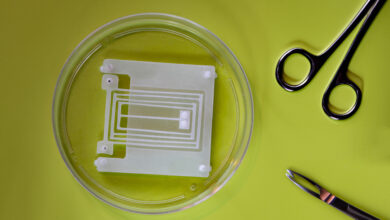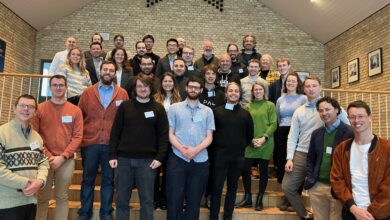MMI completes first Symani microsurgeries in the US following FDA authorization – Robotics & Automation News

Medical Microinstruments, a robotic surgery company, has completed its first clinical cases in the United States using the Symani Surgical System.
Both robotic-assisted microsurgical procedures were performed at the Department of Orthopaedic Surgery at Penn Presbyterian Medical Center.
The historic first US procedures were reconstructive extremity microsurgeries. In one case, the team performed a “free bone transfer” procedure on a patient who suffered a traumatic injury; the procedure involved transferring a segment of bone and skin from their leg to a damaged bone in their forearm.
The surgical team revascularized the bone segment using the microsurgical robot to reconnect the tiny blood vessels and facilitate successful transfer.
The second case involved a patient at risk for a leg amputation due to an infected knee prosthesis with soft tissue deficiency. The team repaired the severe knee wound with muscle and skin from the patient’s back and robotically reconnected the blood vessels to promote revascularization.
Mark Toland, CEO at MMI, says: “The first US cases are a paramount milestone in the global expansion of the Symani Surgical System, and we’re honored to have been able to work with Penn Medicine, a premiere orthopedic surgery department, to achieve it.
“Today marks the beginning of a new era in surgical innovation, as patients across the country with conditions that require complex microsurgical techniques, such as extremity reconstruction, autologous breast reconstruction post cancer resection and lymphedema repair, will now have expanded access to treatment options.”
The U.S. Food and Drug Administration (FDA) recently granted De Novo Classification to the Symani Surgical System, making it the only commercially available platform in the US for reconstructive microsurgery.
It uniquely addresses the scale and complexities of microsurgery and supermicrosurgery such as the anastomosis and suturing of small anatomical structures – like blood and lymphatic vessels – during open surgical procedures.
By allowing surgeons to replicate the natural movements of the human hand at the micro scale, it can expand treatment options for patients in need of advanced surgical techniques.
It is designed to help restore quality of life for more patients, accelerate the number of surgeons able to push the boundaries of complex procedures for delicate anatomy, and enable hospitals to expand their open surgical programs.



